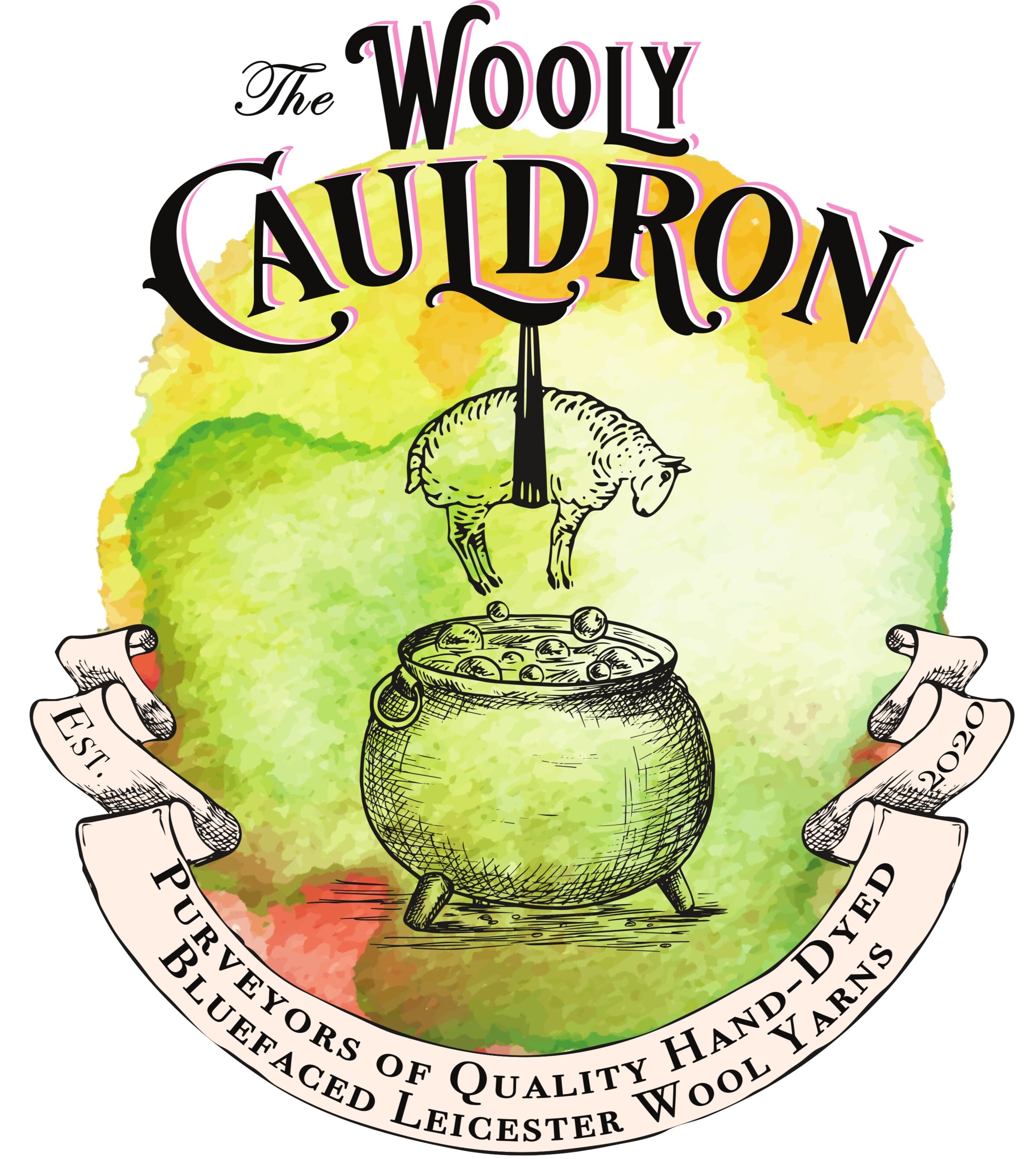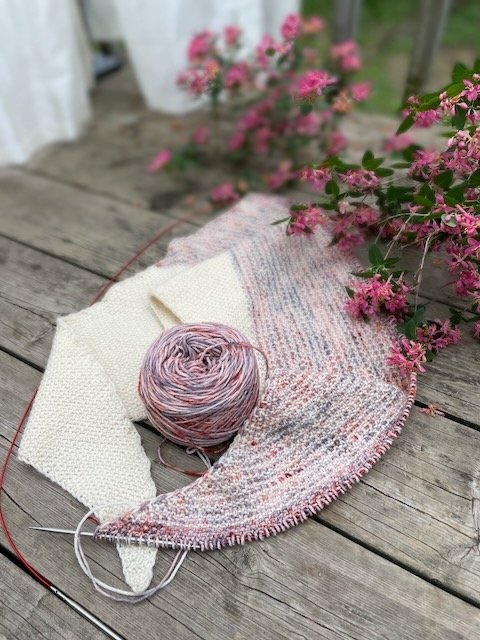"Textured Triptych" : Free Knit Shawl Pattern Using BFL Yarn
Sure, I go on and on about using Bluefaced Leicester (BFL, for short) wool yarn for knitting socks, but that’s not all it’s good for!
This free knit shawl pattern has been designed to use up every last inch of two skeins of 100% Superwash BFL yarn. You can either use two skeins of Tippy Taps DK or two skeins of Tippy Taps Sock held double to produce a timeless and classic textured shawl that’s perfect for layering in cooler weather.
The Textured Triptych pattern is easy enough for beginners, but challenging enough that even advanced knitters will have fun with it!
The woven moss stitch used throughout strikes a happy balance between easy-peasy and lemon-squeezy. It’s a simple slip stitch technique that anyone can do, but which requires a quick check-in with the pattern at the beginning and end of each row to make sure you’re on track.
Read on for the free knit shawl pattern, or get your free PDF download here!
Textured Triptych: A free knit shawl pattern by The Wooly Cauldron
Yarn Requirements
(2) 100 g skeins of Tippy Taps DK (450 m / 492 yd total) or
(2) 100 g skeins of Tippy Taps Sock held double (800 m / 880 yd total)
Needles & Notions:
US 8 (5.0 mm) needles on 24" circulars
Tapestry needle to weave in your ends
Scale for weighing yarn (optional)
Notes on Gauge
28 stitches / 50 rows per 4" square before blocking
This gauge is provided as a guideline. As with any slip-stitch pattern, there is a tendency to knit tighter than usual. For this reason, I recommend that you try out the pattern using US 8 / 5.0 mm needles, and if the drape of the shawl doesn't feel floppy enough after the first 20 or so rows, go up one or two needle sizes.
The Textured Triptych Shawl Pattern knit with Tippy Taps DK in Bare and House Finch.
Pattern Abbreviations
Nighteyes modelling the Textured Triptych Shawl Pattern knit with Tippy Taps DK in Cerise and Jingle Sprinkle.
RS = Right side of work
WS = Wrong side of work
K1 = Knit one stitch
K2TOG = Knit 2 stitches together (a decrease of 1 stitch)
KFB = Knit through the front and back loop (an increase of 1 stitch)
S1wyif = Slip 1 stitch purlwise with the yarn in front
wyifK1 = With yarn in front, knit 1 stitch
YF = Bring your working yarn to the front
YB = Bring your working yarn to the back
[ ] = Brackets indicate a repeated stitch sequence within a row
P1SO = Pass 1 stitch over the left-most stitch on your right needle, dropping the stitch off the needle (this is a bind-off)
P2SO = Pass 2 stitches over the left-most stitch on your right needle, dropping the stitch off the needle (this is a bind-off)
Cast-on & Setup Row
Cast-on | Colour A | (RS): Using Colour A and size US 8 (5.0 mm) 24" circular needles, cast-on 6 stitches using whichever cast-on method you prefer (I used long-tail).
Setup | Colour A | (WS): S1wyif, [K1, S1wyif] to last 3 stitches, K1, KFB, S1wyif.
Section 1
Row 1 | Colour A | (RS): KFB, [K1, S1wyif] to last 3 stitches, S1wyif, K2TOG.
Row 2 | Colour A | (WS): S1wyif, [K1, S1wyif] to last 3 stitches, S1wyif, KFB, S1wyif.
Row 3 | Colour A | (RS): KFB, [S1wyif, K1] to last 3 stitches, S1wyif, K2TOG.
Row 4 | Colour A | (WS): S1wyif, [K1, S1wyif] to last 3 stitches, K1, KFB, S1wyif.
Repeat Rows 1-4 until you have about 35 g left of Colour A.
Section 2
Do not cut Colour A. You will now begin alternating between Colours A and B every 2 rows. At the beginning of Rows 1 and 3, always grab the new colour from behind so that the new, working yarn passes behind the old, dropped yarn before you make your first stitch.
Row 1 | Colour B | (RS): KFB, [K1, S1wyif] to last 3 stitches, S1wyif, K2TOG.
Row 2 | Colour B | (WS): S1wyif, [K1, S1wyif] to last 3 stitches, S1wyif, KFB, S1wyif.
Row 3 | Colour A | (RS): KFB, [S1wyif, K1] to last 3 stitches, S1wyif, K2TOG.
Row 4 | Colour A | (WS): S1wyif, [K1, S1wyif] to last 3 stitches, K1, KFB, S1wyif.
Repeat Rows 1-4 until you run out of Colour A.
Section 3
Row 1 | Colour B | (RS): KFB, [K1, S1wyif] to last 3 stitches, S1wyif, K2TOG.
Row 2 | Colour B | (WS): S1wyif, [K1, S1wyif] to last 3 stitches, S1wyif, KFB, S1wyif.
Row 3 | Colour B | (RS): KFB, [S1wyif, K1] to last 3 stitches, S1wyif, K2TOG.
Row 4 | Colour B | (WS): S1wyif, [K1, S1wyif] to last 3 stitches, K1, KFB, S1wyif.
Repeat Rows 1-4 until you have no less than 10 g left of Colour B, ending with a Row 3.
Bind-Off
You may use any semi-stretchy bind-off you like, but here is what I used:
(S1wyif) Slip 1 stitch with yarn in front.
(wyifK1) With yarn in front, knit 1 stitch. This has added a yarn over before the knit stitch so that you now have 3 stitches on your right needle.
(P2SO) Pass the middle and right stitches over the left stitch and off of your right needle. You now have 1 stitch on your right needle again, and your working yarn is in back.
(YF) Bring the yarn to the front.
(P1) Purl 1 stitch.
(YB) Bring yarn to the back.
(P1SO) Pass the right stitch over the left stitch and off of your right needle. You now have 1 stitch on your right needle again, and your working yarn is in back.
(YF) Bring the yarn to the front.
Repeat steps 2-8 until end of row.
The abbreviated form of these instructions is as follows:
Bind-off | Colour B | (WS): S1wyif, [wyifK1, P2SO, YF, P1, YB, P1SO, YF]. Block your shawl to really bring out the woven effect, but it looks beautiful even if you choose not to block (I didn't bother).
The Textured Triptych Shawl Pattern knit with Tippy Taps DK in Bare and House Finch.





